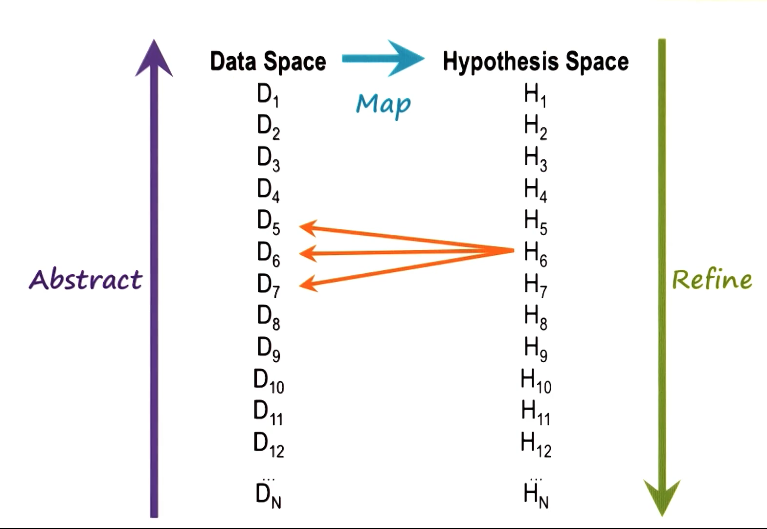Diagnosis
Principle of parsimony: Simplest possible explanation
Defining Doagnosis
Diagnosis: To determins what is wrong with a malfunctioning device or the mapping of the data space to the hypothesis space
- Malfunction is a discrepancy between expected results and observed results
Data and Hypothesis Spaces

- The data space is all of the observed data
- The hypothesis space is a hypothesis to explain the observed data
- Mapping the data space to the observed space can be very difficult
Heuristic Classification
- Bottom up classification processing follows the abstract arrow
- top down classification processing follows refine arrow
Mapping Data to Hypothesis
Mapping needs to take place from data-space to hypothesis space, and additionally from the hypothesis space to the data space
Difficulties
1) One data point, multiple hypothesis 2) One hypothesis may explain multiple data points 3) Multiple hypothesis multiple sets of data 4) Mutually exclusive hypothesis 5) Interacting data points (data points cancelling each other out)
Two Views of Diagnosis
Classification
Mapping data onto hypothsis
Abduction
Rule: Cause -> Effect
Rule: Bob hates Joe Cause: Bob walks in Effect: Joe leaves
Fundamental Forms of Inference
- Deduction: Given the rule and the cause, deduce the effect
- Modus pollen
- Induction: Given a cause and effect, induce the rule
- Given a rule and effect, abduce a cause
Choosing a Hypothesis
1) Hypothesis must cover as much of the data as possible 2) The smallest number of hypothesis out to be used, Principle of parsimony 3) Some hypothesis may be more likely than others